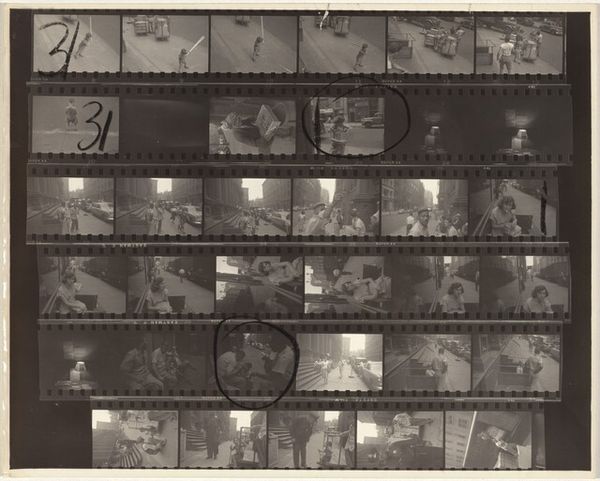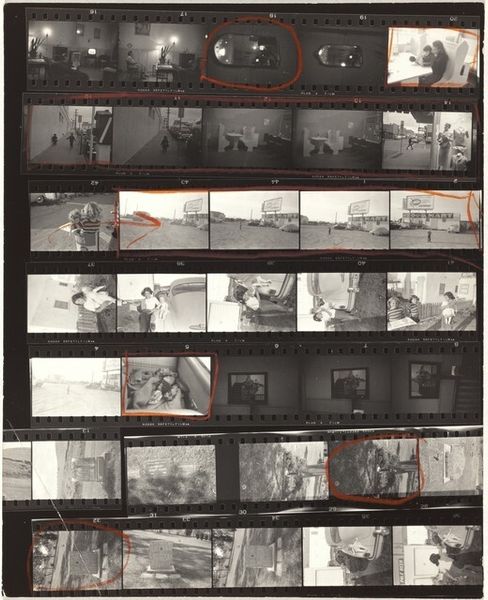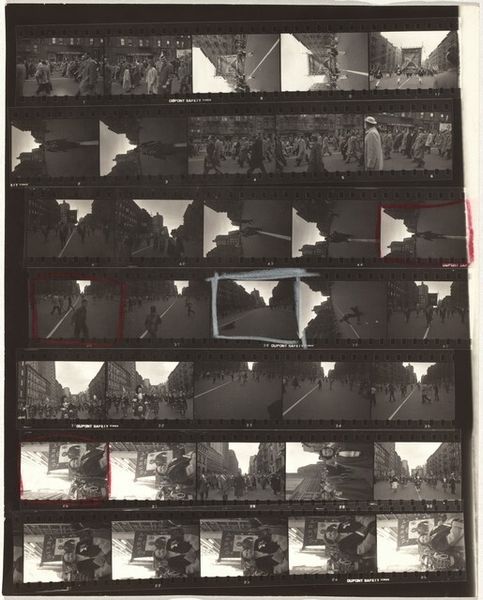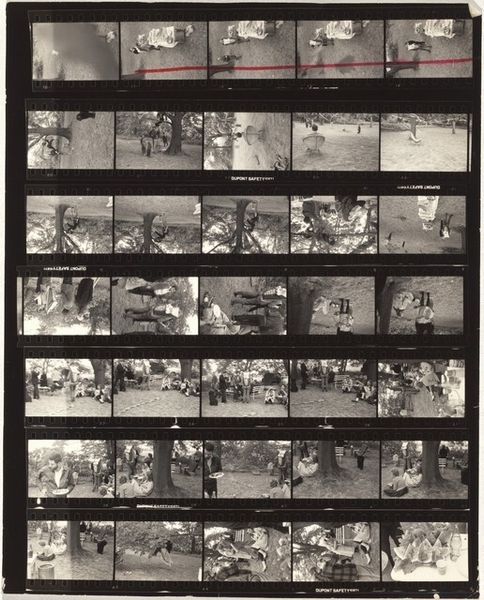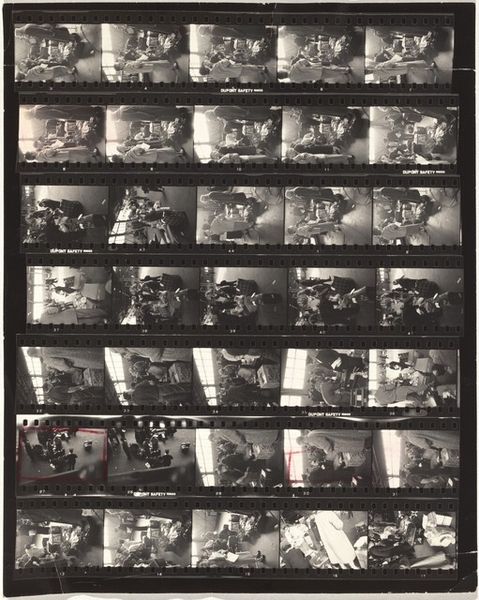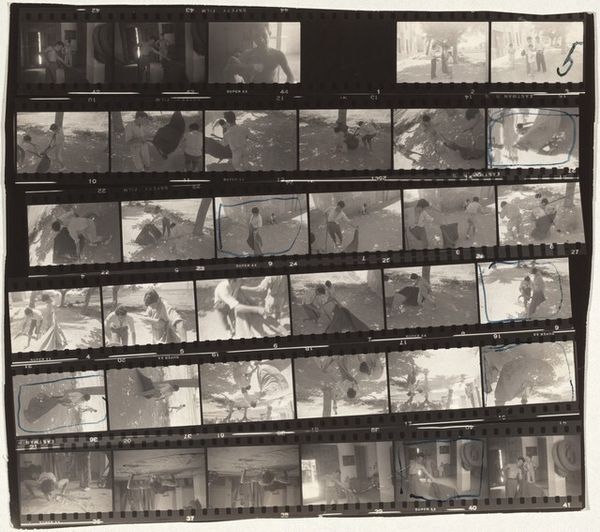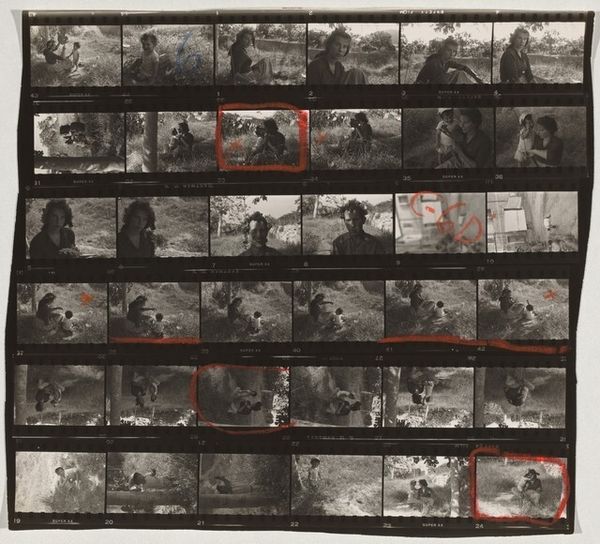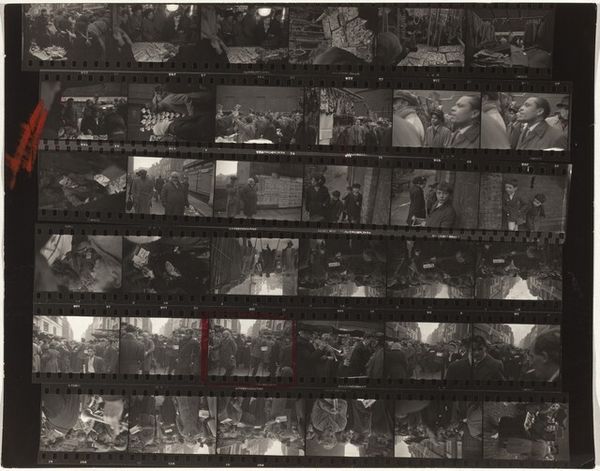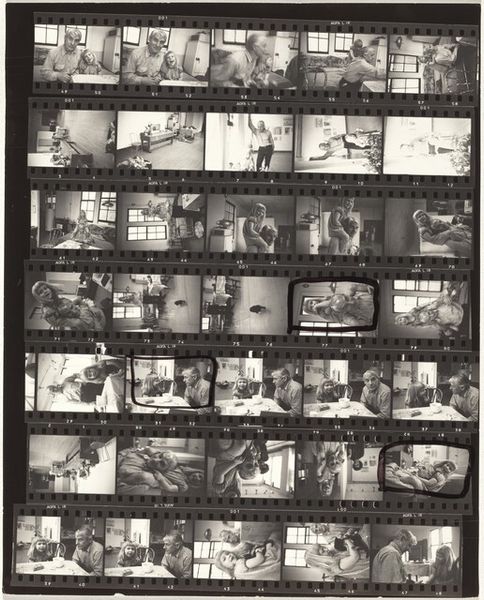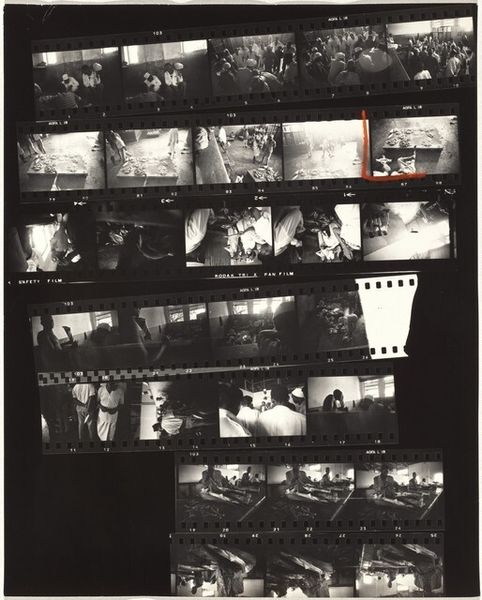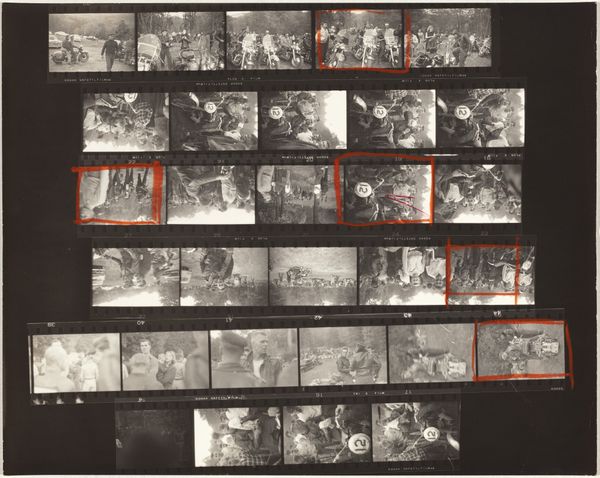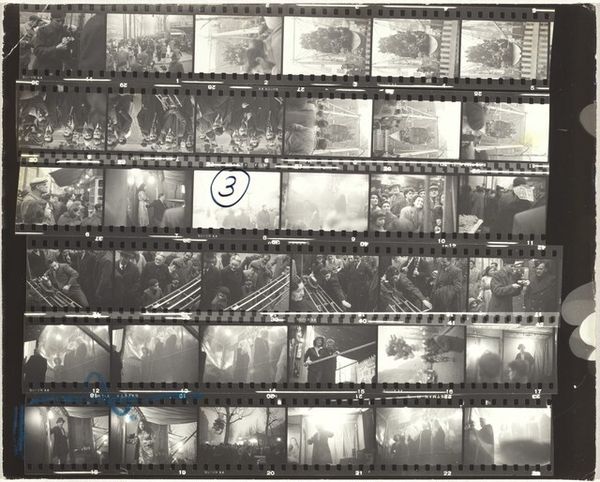
photography, gelatin-silver-print
#
contemporary
#
landscape
#
street-photography
#
photography
#
gelatin-silver-print
Dimensions: sheet: 21.8 x 27.8 cm (8 9/16 x 10 15/16 in.)
Copyright: National Gallery of Art: CC0 1.0
Curator: This gelatin silver print by Robert Frank is titled "Andrea with horse--Woodstock no number," created in 1962. What do you make of it? Editor: It's a contact sheet, isn’t it? Immediate impression—it looks raw, like we're getting a glimpse into the artist's working method. Almost like seeing the innards of the creative process exposed. Curator: Exactly. Think about what it reveals. We're not just seeing the finished image, but the surrounding frames. The context is crucial, as is understanding that Frank’s work frequently captures the liminal spaces of American society. This image offers insights into youth, leisure, and the ways children interact with nature. Consider it within a wider narrative of the changing American landscape, class, and idyllic representation in the 1960s. Editor: Right. We're not just looking at the moment of connection between a girl and a horse, which, in and of itself could be pretty charged with meaning, right?, like the horse representing freedom and the girl finding a reflection of herself in it, as is pretty often the case. We’re seeing the whole roll—the repetitions, the slight shifts in focus. The material object really adds layers here. The image of film stock brings up the means by which all these images were recorded. The labour behind that shot. It raises questions about mass media, circulation, and how these images circulate through society. Curator: Yes. Furthermore, what about the relationship between the photographer and subject? Whose gaze are we engaging with and what’s the relationship between the young girl in the shot, the animals, the social mores of representing the idyllic versus the harshness of how the medium itself can sometimes communicate something beyond such themes? What commentary do these images make when they confront those disparities? Editor: It is a document of material traces. From the borders to the handwritten notes indicating possible enlargement choices, every aspect of the image bears witness to the artist's process and artistic choices. So yes, it makes a connection by forcing those things together that might at first seem to exist independently of one another. It also reminds me of art's role in bearing witness to our social times and what we hold valuable. Curator: I agree. Ultimately, Frank's work gives viewers tools for critically evaluating image construction and reception, and I believe that begins in earnest by considering its inherent materiality. Editor: It's fascinating how the context of the contact sheet amplifies the emotional impact of a singular image, reminding us to see not just the surface, but the process that shaped it.
Comments
No comments
Be the first to comment and join the conversation on the ultimate creative platform.
